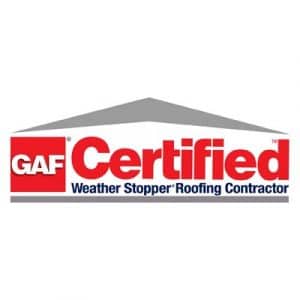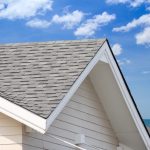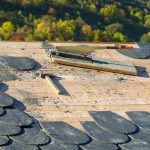
How to Spot Dry Rot in Your Roof
Back in 2011, Yale students made headlines for discovering a plastic-eating mushroom during a class trip to Ecuador. Since then, we’ve discovered multiple fungal species that consume man-made plastics, cementing the reputation of fungi as nature’s most effective garbage disposals.
Even closer to home, fungi are great at breaking down materials from wood to bricks to masonry. As you might expect, these microscopic trash compactors aren’t great for your property!
If you aren’t on the lookout for dry rot’s early signs, you might not catch these destructive fungi in action until their spores have traveled throughout your home. As a result, you could be looking at extensive damage to your home or commercial building.
To keep the subtle damage of dry rot at bay, read on to learn about the red flags, treatment options, and more.
Causes of Dry Rot
Before we dive into the warning signs, it’ll help to know what causes dry rot and when you should be on the lookout. When you notice that any of the conditions that cause dry rot are present on your roof, it’s time to add a dry rot check to your roof inspection checklist!
Also called “brown rot,” dry rot is a type of wood decay. As mentioned above, several types of microscopic fungi are responsible for this condition.
The most common fungi that cause dry rot are Serpula lacrymans and Meruliporia incrassata. These types of fungi range in color from yellow-brown to white. Both kinds of fungal growth thrive on the cellulose in your property’s wood, weakening its structure.
Though you might hear the terms “dry rot” vs. “wet rot” and think that the former must not involve moisture, you’d be wrong!
Dry rot takes place in much drier conditions, but it still needs a small amount of moisture to start. This is because the fungi responsible for dry rot need a moisture content of at least 20% to survive, and the rot spreads faster with more moisture. These fungi also thrive best in moderate temperatures of around 70 to 77 degrees Fahrenheit, meaning they’ll love digging through your attic and into your room-temperature building!
As a result, high humidity and moderate temperatures are common causes of dry rot. A failure to repair past water damage can also put your roof at greater risk, as can poor ventilation.
Dry rot can also happen if wood isn’t dried properly before use. Certain wood treatments can repel or prevent fungal growth.
If your home or commercial property meets any of the conditions above, especially if you think you might have higher-than-acceptable moisture levels in the wood, do a thorough check for the signs of dry rot.
Dry Rot: Early Signs
Identifying dry rot early is the key to stopping it in its tracks. If you catch it before it has a chance to spread, you can minimize the need for rotted wood repairs on your roof and even the rest of your property. As you check your roof and attic, keep a sharp eye out in corners and crevices as well as any areas that have taken water damage in the past.
Here are the symptoms to look for:
Wood Color and Texture
When dry rot spreads, it visibly distorts the wood. You may notice discoloration, which ranges in color from whitish-yellow to rusty orange to dark brown. These discolored patches may peel easily.
Cracks and crumbling are more common in the later stages of dry rot, but you may also see them early on.
The wood may have concentrated patches with a light-colored powdery texture. This texture is fungal growth, which can appear dusty, cottony, or fluffy, depending on the type of fungi. Some spores will produce hyphae, which are thin strands that look like spider silk.
Late-stage fungal growth involves visible mushrooms. Fleshy, fruiting bodies of mushrooms are signs that your dry rot has gotten out of control.
Musty Odors
The fungi responsible for dry rot create a musty, damp smell as they feed on the cellulose in the wood. This smell may be reminiscent of mushrooms.
Visible Sagging
Dry rot becomes brittle as it’s eaten away, so you may notice that it’s softer or weaker than the surrounding parts of your attic. Sagging or bowing are common late-stage signs of this rot.
If you’re not sure whether the sagging is due to dry rot, take a blunt tool like a screwdriver and poke the wood’s surface. If part of the wood breaks off or flakes away, you may have dry rot.
Dry Rot Treatment Options
Left untreated, dry rot can spread beyond your damaged roof to any porous building material. Even high-end roofing options like clay or slate tiles are vulnerable to this damage, though they’re far less likely to experience rot than wood is.
As soon as you notice any of the signs above, it’s crucial to call a professional who can help preserve your property’s structural integrity. Professional roof experts can confirm the presence of dry rot. They’ll develop a treatment plan that may involve spraying fungicide, removing and replacing any rotted materials or insulation, and reinforcing existing structures.
If you haven’t caught the issue early enough, you may be looking at a complete roof replacement instead of a repair.
Your roofing expert can also help you understand how to prevent dry rot from returning. They can help fix any moisture issues that led to the rot, including leaks, poor drainage, or subpar ventilation. Using pressure-treated or decay-resistant wood can also help you keep this fungal growth at bay in the future, and regular professional roof inspections are also a must.
Get Rid of Your Dry Rot
Preventative checks for dry rot’s early signs can help you maintain the integrity of your roof. If you miss red flags like textural changes, discoloration, or sagging, you might expose your property to invasive, annoying fungal growth!
The second you spot dry rot on your roof or in your attic, it’s time to get into gear. Contacting a roofing expert can help you get rid of this nuisance fast.
That’s where WeatherTech Roofing comes in. As the trusted roofing experts in San Antonio and the surrounding areas, we’re proud to offer speedy roof repairs and replacements with high-quality materials. Request your free estimate today.













